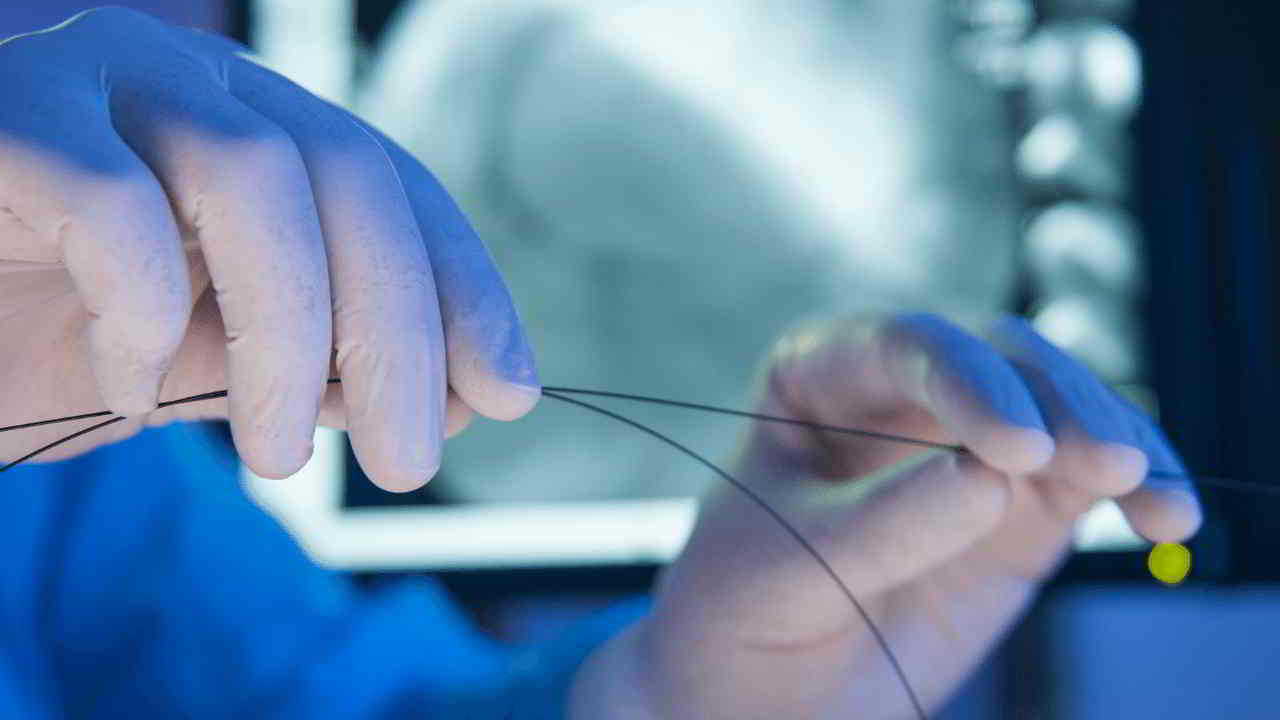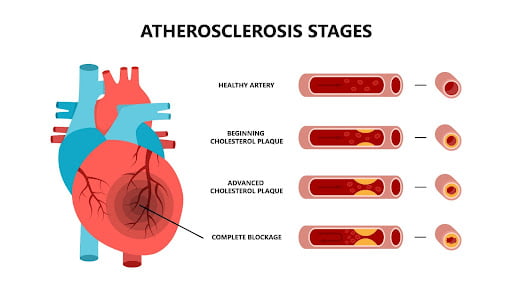Home > Blog > Cardiology > Symptoms After Stent Placement
Symptoms After Stent Placement

Stent placement is a type of surgery where the doctor inserts a tiny tube inside a blocked vein to open up the vein and continue the blood flow. The tiny tubes known as stents are made up of metals and plastics. The main and only purpose of placing the stent is to continue the blood flow in the body.
There are two types of stents, the smaller ones are used for smaller veins and arteries, and the larger stents called the stent grafts are used for larger arteries. Stents are also classified based on their location of placement, the condition that requires treatment, and what passageway is obstructed.
Examples of such stents include coronary stents, carotid artery stents, peripheral vascular stents, ureteral stents, prostatic stents, esophageal stents, and biliary stents.
In which conditions can you consider stent placement?
Stents help keep the clogged arteries leading to the heart muscle open. A plaque buildup in the arteries can reduce blood flow to the heart and cause a blood clot, leading to a heart attack. The buildup of plaque mostly happens in atherosclerosis (occurs due to high blood cholesterol).

Furthermore, you can take a stent placement in the following categories:
- If you find plaque is blocking your blood vessels. Plaques are the cholesterol and other substances attached to the vein walls.
- To prevent the weakness of the artery’s wall. This weakness is commonly known as an aneurysm in the brain, aorta, legs, and spleen.
- To open up the bile ducts used to carry bile from the digestive system to the body.
- Blockage of the coronary artery in the heart.
- To open up the main alleyway of the lungs, commonly known as the Bronchi.
- To open up the Uterus alleyway, which carries the urine from the kidney to the bladder!
What is the procedure of the Stent Placement?

- The doctor will first give you anesthesia.
- Then, he will make a small cut in your groin, leg, or arm.
- The doctor will then insert a tiny, flexible plastic tube (catheter) through an artery in your groin, leg, or arm.
- A special dye will be injected, so blood flow through the arteries is visible on the monitor screens. I know this method of imaging as an angiogram.
- The doctor moves a balloon catheter and then a stent to the site of the blockage in the artery.
- The balloon is then inflated and stretched wide against the artery walls, opening the site’s blockage.
- Lastly, the balloon is deflated and gently removed, leaving the stent in place.
- The doctor will further remove the tools and close the cut in the last step.
After the procedure
After your procedure is done, you will probably remain at the hospital overnight while your heart is monitored for any post-op complications, and your medications will be adjusted. However, you generally should be able to return to routine work or your everyday life within a week after angioplasty.
Once you return home, your doctor will advise you to drink plenty of fluids to help flush your body with the contrast dye. In addition, it will be best to avoid strenuous exercise and lift heavy objects for at least a day afterward. Finally, don’t forget to ask your doctor or nurse about other restrictions.
What are the possible risk factors of Stent Placement?
About 1.2 million angioplasties are carried out in a year, but that doesn’t mean they do not have any risks. Any surgical procedure has one or more risks involved. Similarly, stent placement is also associated with some risk factors.
Some of the common risks involved in stent placement include:
- Susceptible reflection in the body.
- Breathing problems
- Bleeding
- Artery blockage
- Blood clots
- Heart Attack
- Blood vessel Infection
- Stones in the Kidney
- Artery Narrowing
- Strokes
- Seizures
Many people are allergic to metal and plastic particles, which is why they face this kind of stumbling block. If these allergies are present, there are high chances that the body will reject the stents.
If you find this kind of complication inside the body and feel unusual or if you have internal bleeding, which shows blood coming out from your stool, do not wait for anything and immediately consult with the doctor.
What should you follow to get a fast recovery?
Recovering from Stent placement is not that tough. You have to take some specific precautions and listen to your doctor. Your doctor can suggest some exercises and diet and prescribe medications such as blood thinner to prevent further blockages. For faster recovery, do what your doctor says.
When to Call Your Doctor
Make sure you call your doctor right away if you experience any of the following symptoms that last longer and get worse over time:
- Chest pain or frequent chest discomfort.
- Shortness of breath.
- Sudden weakness of the face, arm, or leg.
- Infection, pain, or bleeding at the entry site in your arm or leg
- Other unexplained symptoms.
Diet chart you should follow:
It is a must for everyone to follow a healthy diet and focus on their body. According to research, consumption of fruits, vegetables, dry fruits, and whole grains can lower the risk of heart complications. Some of the things that your diet should include are:
- Meat- like Red meat, chicken, or alternatives like egg, tofu, nuts, etc.
- Fish- those are rich in Omega 3.
- Whole Grain- like pasta, cowman, bread, barley, rye, oats, polenta, brown rice, etc
- Dairy- like milk, milk powder, dark chocolates, etc
- Water- you have to consume water in a huge amount and should avoid drinking soft drinks and hard drinks.
- Vegetables- like cauliflower, capsicum, tomato, etc
- Fruits- like apples, bananas, grapes, watermelons, etc.
What are the restrictions after stent placement?
Here are some things that are better to avoid after going through stent placement.
- Quit smoking and drinking alcohol
- Quit supplements and drugs intake
- Avoid consumption of aspirin, clopidogrel, ibuprofen, and naproxen.
- Avoid drinking water during the surgery night.
Conclusion
The purpose of a stent is to open the blockage of clogged arteries and keep it open, allowing blood to flow smoothly. Good blood flow reduces pain and reduces the risks of clot formation. Getting stent placement doesn’t mean your heart disease goes away. You will have to continue healthy lifestyle habits and take medications as prescribed by your doctor.
Call Carotid Artery Stent Placement Doctors now for more information on angioplasty procedures and stent placements!
Patient Feedback
Great doctors, Good facilities, caring and helping staff. I recommend this hospital for day care services.
![]()
![]()
Sangram Shinde
All doctors r very good. There treatments is best. Other staff also good. The service of nurses is great...Hospital is always clean.
![]()
![]()
Vaishali Aitawade
All services provide by hospital are nice and on time. Doctors are polite and co-operative with patient.
![]()
![]()
Ankita Jagtap
All services provided by hospital is good. Hygiene maintained well.Even at night good care provided.
![]()
![]()


